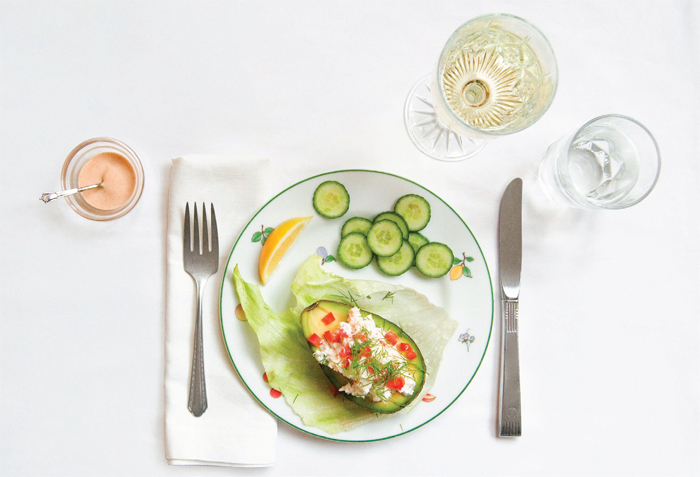
Melanie Rehak

In 1979, Werner Herzog made good on a promise to eat his shoe. A few years earlier, Errol Morris, a protégé of Herzog’s in Berkeley, California, had been struggling to finish his first film. Herzog promised that if Morris got it done, he’d consume some footwear. Morris ultimately delivered Gates of Heaven, the documentary about the pet-cemetery business that launched his career; Herzog, true to his word, entered the kitchen with a pair of leather boots. He stuffed whole heads of garlic into the toes, added liberal doses of hot sauce, and tossed the concoction into a pot along with It was still summer when I sat down to read Ruth Reichl’s new cookbook, My Kitchen Year: 136 Recipes That Saved My Life (Random House, $35). I knew this partly because when I checked my Twitter feed that morning, Reichl herself reminded me: “So lush. So green. Plants seem to leap into welcoming air. First sour cherries, slumped onto warm buttered biscuits. Summer’s here.” Reichl, who joined Twitter in January 2009, has become famous—if not infamous—for her ongoing stream of Zen-like gustatory dispatches, described by the New York Times as follows: “Start with an encapsulation of the weather and the Hearing the name Eva Thorvald, you might expect to find the central character of J. Ryan Stradal’s first novel, Kitchens of the Great Midwest (Pamela Dorman Books, $28), smack in the middle of a multigenerational family saga as styled by Ingmar Bergman in full Fanny and Alexander mode: Scandinavian abundance with a dark existential underbelly, the kaleidoscopic shifting apart and coming back together of lovers, spouses, and siblings—and especially of parents and children—and plenty of feasts to mark the passage of time. Actually, though, Eva’s a product of that other Scandinavia in miniature—familiar to us all, thanks to Garrison Keillor—known It was a dark and stormy night when I broke out crime novelist Sara Paretsky’s recipe for Chicken Gabriella. Replete with fresh figs and several kinds of booze, it is one of the many tantalizing and entertaining choices in the new Mystery Writers of America Cookbook: Wickedly Good Meals and Desserts to Die for (Quirk Books, $25), a collection of recipes from many of America’s top crime writers, including the relatively newly annointed Gillian Flynn as well as old hands like James Patterson, Laura Lippman, and a host of other authors who may not be as well-known but are no A few months ago, I found myself alone in Seattle, a city I know very little about. Yes, there’s Pike Place Market and the Space Needle and the Rem Koolhaas–designed Central Library. And, OK, I’ll just go ahead and show my age: Nirvana and all those plaid flannel shirts. But what I’m really talking about is where to eat, of course. No matter how much you love your local haunts—and I love more than a few of mine mightily—novelty always counts for something. And it always gives me an appetite. 
Most of the people who saw the 2009 film Julie & Julia agreed: It would have been better if it were simply Julia. (Indeed, one fan, who happened to be a film editor, was heralded as a hero vigilante when he posted a Julie Powell–free version of the movie called & Julia online.) Although the story of twentysomething blogger Powell—breaking down in front of her stove on a nightly basis, writing about her travails with complicated soufflés and slimy innards in her Queens apartment—should have been by far the more relatable of the two, somehow we were still less interested The holidays are fast approaching as I write this column, bringing the usual flurry of thoughts about what to cook for the rush of upcoming festive dinners. Whatever delicacies appear on my table (along with the family recipes that have been grandfathered in despite their dependence on canned soups), they’re guaranteed to be pretty different from what I, and everybody else in America, was making in the kitchen twenty years ago (heritage-breed turkey, I’m looking at you). Between then and now, the way we eat has evolved in ways both wonderful and worrying, and how we write about what we 
Long before I had any idea that Laurie Colwin was a food writer, I loved her writing about food. I discovered it not in the articles she wrote for Gourmet and other magazines, starting in the ’80s, but in her fiction, each volume of which, if I may borrow one of her titles, is another marvelous thing. They’ve been a part of my life for so long now, in steady rotation on my bedside table and in my brain, that I can’t remember when I read my first one, or even which one it was. 
Some years ago, when my first child was finally old enough to sit through a book that (a) was not made of cardboard and (b) had more than four words on a page, I raided the bookshelves of my childhood bedroom with glee. Narrative, at last! All my old favorites were there—the Wizard of Oz books, The Adventures of Pippi Longstocking, The Tale of Peter Rabbit, In the Night Kitchen. I loaded them into a bag and brought them home, and we started right in. Among the spoils was a picture book that had faded from my memory over the Antony Nagelmann Soft-boiled eggs make their first of several appearances in the opening paragraph of Kate Christensen’s memoir Blue Plate Special: An Autobiography of My Appetites (Doubleday, $27). The scene is Berkeley, California, in the 1960s, sometime in the third year of the author’s life, at the family breakfast table. Sun streams in; Christensen’s beautiful […]